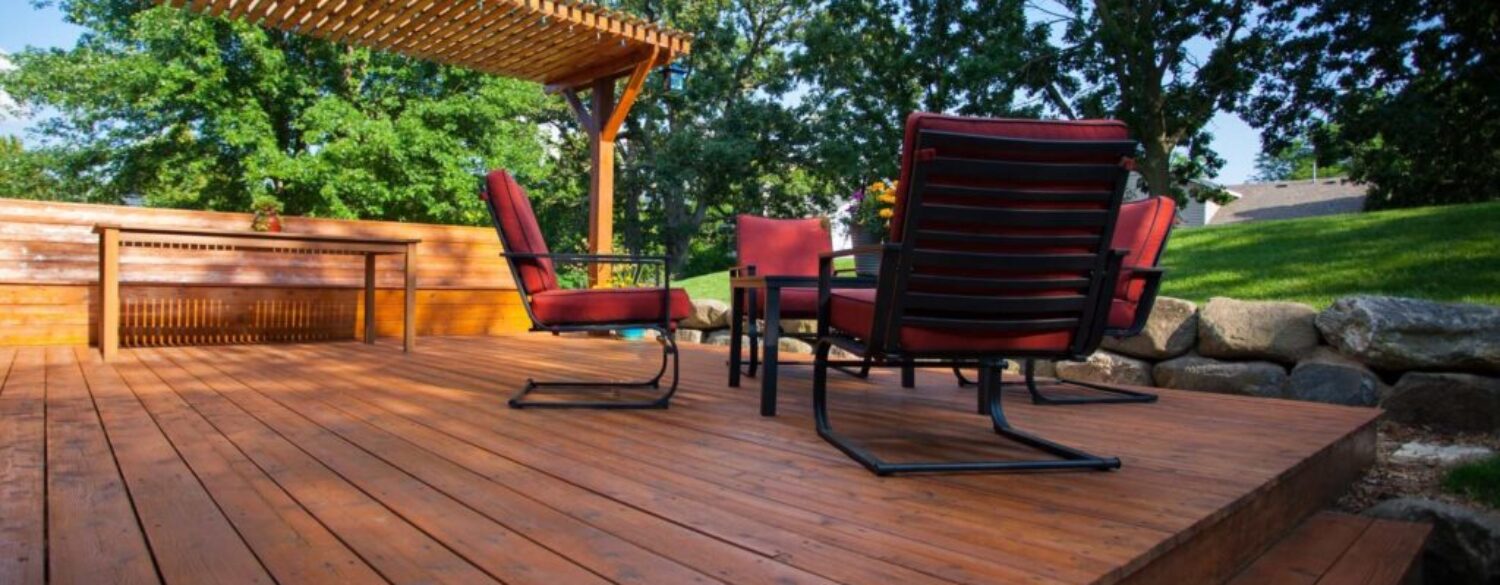Identifying Safety Issues with Your Porch, Deck or Balcony
Porches, decks and balconies are great additions to any home, but they can also pose dangers when not maintained properly. Hazards like loose railings, gaps between deck boards and rusted fasteners are common in homes where decks and porches are left in poor condition. Read on for tips on how to identify and prevent common porch and deck safety issues.
Loose Railings
Lagging screws in from the outside when building a railing can result in loose railings and pose a hazard to anyone leaning against it. Ideally, rail posts mounted to the interior of a frame can be strengthened by installing blocking around the post, creating a kind of pocket for it and making it sturdier. For railing posts connected to the outside of the frame, you can strengthen the rail by tightening the bolts and installing blocking to the rim joist. Also check that carriage bolts go all the way through to ensure a tighter fit for railings.
Gaps in Butt Joints
Too much room between the ends, or butt joints, of deck boards can pose a tripping hazard, and too large of a gap can cause the wood in your deck to crack. Leaves and debris can also build up in those gaps, resulting in the wood rotting out more quickly. One solution for this (if you have a deck that’s over 20 feet long or wide), is installing a breaker board that runs perpendicular to the deck surface. This can help ensure that deck boards are all kept to the same length and can reduce wood expansion.
Wobbly Ground Connection
If the posts connecting your elevated deck to the ground are a bit loose or don’t seem stable, make sure that each post is firmly attached to a concrete pier at the bottom and to the deck frame at the top. Posts should be connected to a concrete pad and raised at least 8 inches above the ground to prevent water damage. Check for water damage to the bottom of the post by pushing an awl into the wood. If the wood is soft or spongy, it’s best to replace the post.
Rusted Fasteners and Connections
Your porch or deck is held together by steel materials like screws, bolts and other fasteners that can rust or degrade from exposure to moisture and rain. Usually porch and deck fasteners are made out of galvanized steel, but they can still become unsound over time. Make sure that these are free of rust and have no loose connections.
Mold and Mildew Growth
Especially common in the Pacific Northwest, decks that take on a greenish cast or become host to mushrooms and fuzzy mold need attention. Use a water and bleach solution to spray your deck’s surface to prevent damage from rotting wood. Staining your deck or porch every few years can also protect wood by adding a critical barrier from the elements.
Weak Ledger Board Connections
Many of the stories you hear about deck or balcony collapses occur because of weak ledger board connections. A deck ledger board operates on the same principle as a chair: the front chair legs are self-supporting, but the back legs are linked to the backing of the chair. Similarly, a ledger board connects the supporting deck posts that are farthest from the home to the posts closest to the home. When the ledger board isn’t fastened properly – when the posts closest and farthest from the home are not fully connected across the deck – the deck can pull away from the home and eventually fall.
If you’re concerned about the safety and maintenance of your porch, deck or balcony, contact South Sound Inspections for a thorough, objective assessment.



